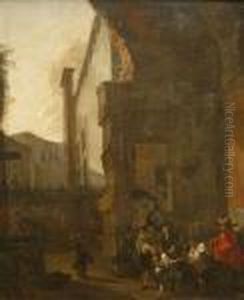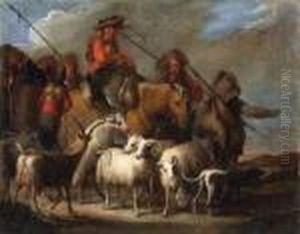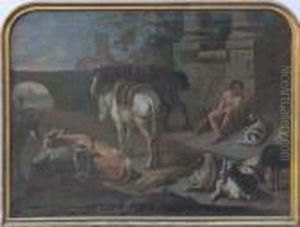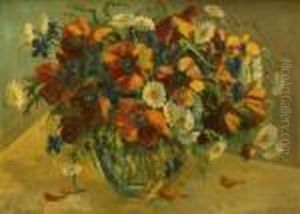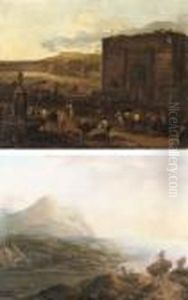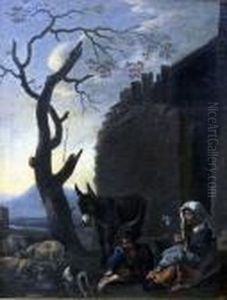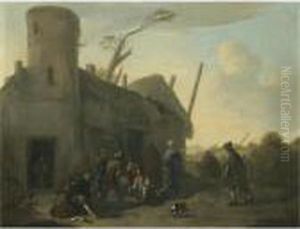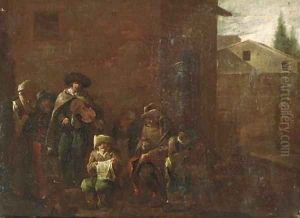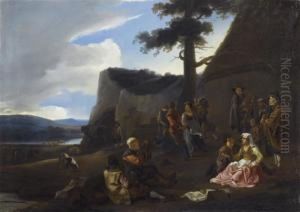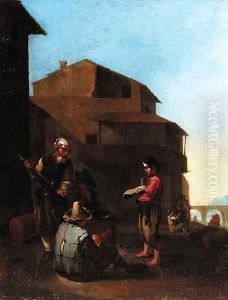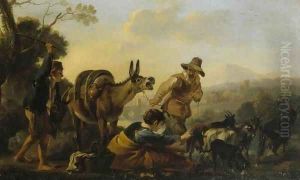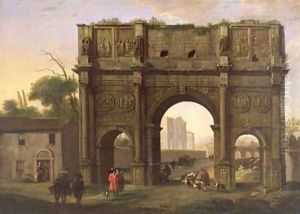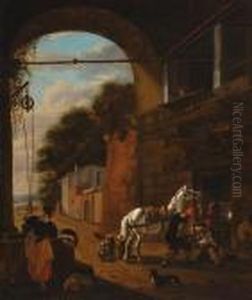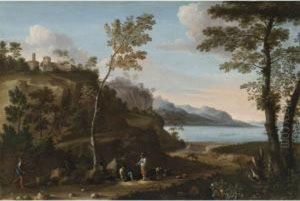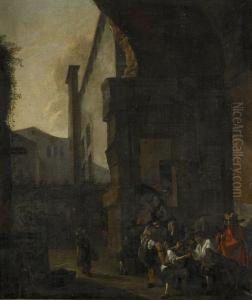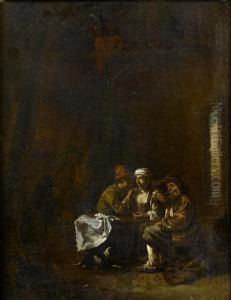Jan Miel Paintings
Jan Miel was a Flemish painter and engraver who was born in 1599 in Beveren-Waas, near Antwerp. He was initially a pupil of the painter Gerard Seghers. Miel's early work is characterized by his interest in depicting scenes from everyday life, often with an emphasis on the humorous or satirical aspects of human behavior, which aligns him with the Flemish genre painting tradition.
Miel moved to Italy at a young age, where he became involved with the Bamboccianti, a group of predominantly Dutch and Flemish artists working in Rome who were known for their low-life subjects. He was one of the first northern artists to work in this genre in Rome. His Italian works often depicted the lives of the common people, such as peasants and beggars, and he became known for his lively and colorful style.
In 1648, he was admitted to the Accademia di San Luca, the prestigious academy of painters in Rome, which was a significant recognition of his talents. Miel also worked on several commissions for the Barberini family, one of the most influential families in Rome at the time.
Later in his career, Jan Miel began to receive more official commissions, including works for the papal palaces. His style evolved, showing the influence of Roman classicism. He decorated several rooms in the Vatican under the direction of the architect Gian Lorenzo Bernini, a testament to his growing reputation in the artistic circles of his time.
In 1658, Miel became the court painter to Charles Emanuel II, the Duke of Savoy in Turin. This was a prestigious position that allowed him to work on a variety of projects, including both religious and secular subjects. His work in Turin includes frescoes in the Palazzo Reale and the chapel of the Holy Shroud in the Turin Cathedral.
Jan Miel's contribution to the development of genre painting was significant, and he is considered an important figure in the transition between the Flemish tradition and the Baroque style that dominated Italian art. He died in Turin in 1663. His works continue to be appreciated for their combination of humor, social commentary, and skilled craftsmanship.



